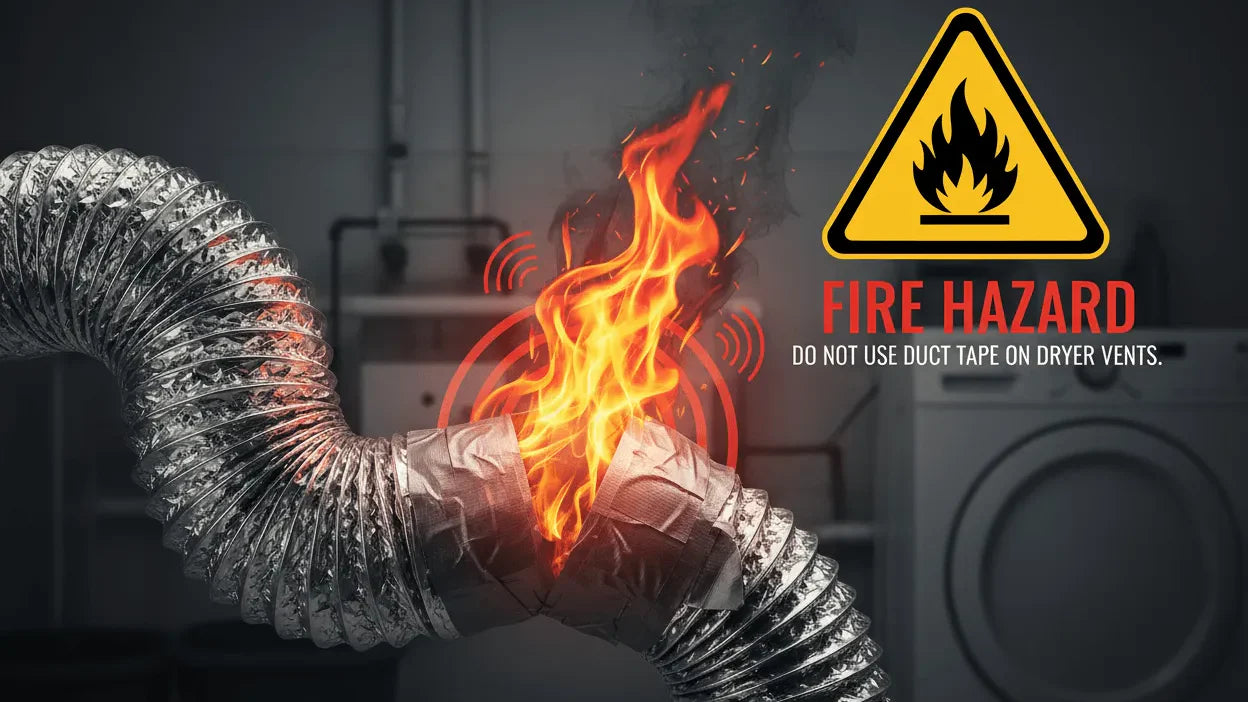Dryer Leaking Water: Why It Happens & How to Fix It
Is your dryer leaking water from underneath or the vent? Don’t ignore it — this could lead to moisture damage, mold, or even poor drying performance. In this post, we’ll walk through the common causes of dryer water leaks, practical fixes, and how to prevent the problem in the future.

Common Signs Your Dryer Is Leaking Water
- Water pooling under or behind the dryer
- Moisture around the wall vent or floor vent
- Clothes taking longer to dry or staying damp
- High humidity or musty smell in the laundry room
Why Is My Dryer Leaking Water? (Top Causes)
1. Blocked or Clogged Dryer Vent
A clogged vent restricts airflow, causing warm, moist air to condense inside the duct. This is the most common reason for a dryer vent leaking water.
2. Damaged or Loose Dryer Vent Hose
If the hose is cracked, crushed, or not securely attached, moisture can escape and form water around the dryer.
3. Long or Improper Venting Layout
Venting that’s too long (e.g. over 25 feet), or has too many bends, can trap moisture and lead to condensation buildup.
4. Condensation Build-Up in Cold Spaces
If your vent duct runs through an uninsulated wall, attic, or garage, warm dryer air cools rapidly and turns into water.
5. Lint Buildup Inside the Machine
When lint accumulates in the lint trap or inside the dryer, it restricts airflow — increasing humidity inside the dryer and causing water to form.
6. Broken Door Seal or Gasket
A worn or damaged door gasket lets humid air escape, which can condense on nearby surfaces or collect under the machine.
7. Incorrect Venting Into Attic or Garage
Venting into non-exterior areas (like an attic) can cause serious moisture issues, leak water, and even grow mold.

How to Fix a Dryer Leaking Water
Step 1: Inspect & Clean the Dryer Vent Hose
Unplug your dryer and detach the vent hose. Check inside for lint or water buildup. Clean the hose thoroughly to restore good airflow.
Step 2: Replace a Damaged Dryer Hose
If the hose is damaged, consider replacing it with a durable metal or semi-rigid duct. Avoid flimsy plastic hoses that trap moisture easily.
Here’s a high-quality dryer vent hose you can use: Dryer Vent Hose on Amazon

Step 3: Shorten or Re-route Long Venting Systems
Reduce the length of your duct or redesign the layout to minimize bends. Aim for under 25 feet of total duct length for better airflow.
Step 4: Seal Loose Connections
Use foil tape (not standard duct tape) to seal all joints — between the dryer, the hose, and the wall vent. This ensures moist air doesn’t escape.
Step 5: Remove Lint Inside the Dryer
Clean the lint trap, then open up (safely) to remove lint from the blower wheel, duct, and lint box housing.
Step 6: Fix Condensation Issues
If the vent runs through cold areas, wrap the ducts in insulation or use a condensation-resistant hose. You can also install a backdraft damper.
Step 7: Replace Worn Door Gasket
If you notice that air is leaking from the door or the gasket is worn, replace it. A tight seal reduces the amount of humid air escaping.
When to Call a Professional
Consider hiring a technician if:
- Water seems to be coming from inside the dryer drum
- There’s electrical damage or burning smells
- The vent is hidden inside a wall, and you can’t access it safely
- You see signs of mold around the dryer, or suspect it’s more than just a duct issue
How to Prevent Dryer Leaks in the Future
- Clean the dryer vent every 3–6 months
- Keep your vent hose layout short and direct
- Use a quality metal or semi-rigid vent hose (like the one linked above)
- Ensure your vent exhausts outside — never into attics or garages
- Insulate ducts passing through cold areas to reduce condensation
FAQ About Dryer Leaking Water
Q: Why is my dryer leaking water underneath?
A: It’s most likely due to condensation from restricted airflow or a partially blocked vent.
Q: Can a leaking dryer cause mold?
A: Yes — persistent moisture buildup around or under the dryer can promote mold growth over time.
Q: Why is water coming out of my dryer vent?
A: That often means warm, moist air is cooling inside the duct, turning into water.
Q: How often should I clean my dryer vent?
A: Ideally every 3–6 months, depending on how frequently you use it.



